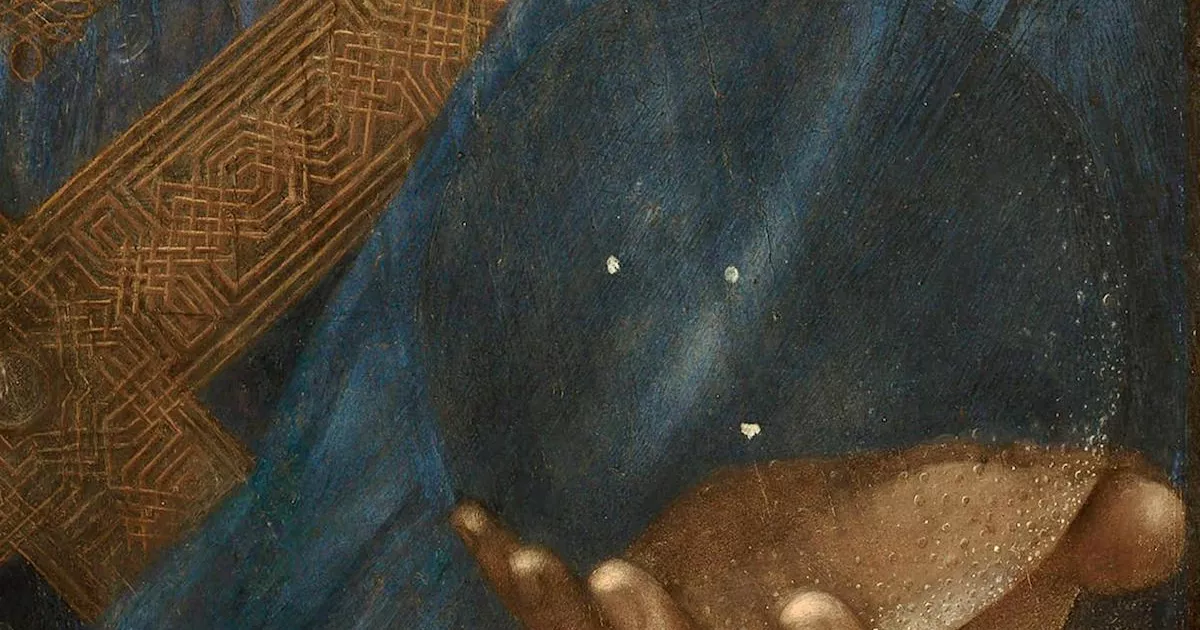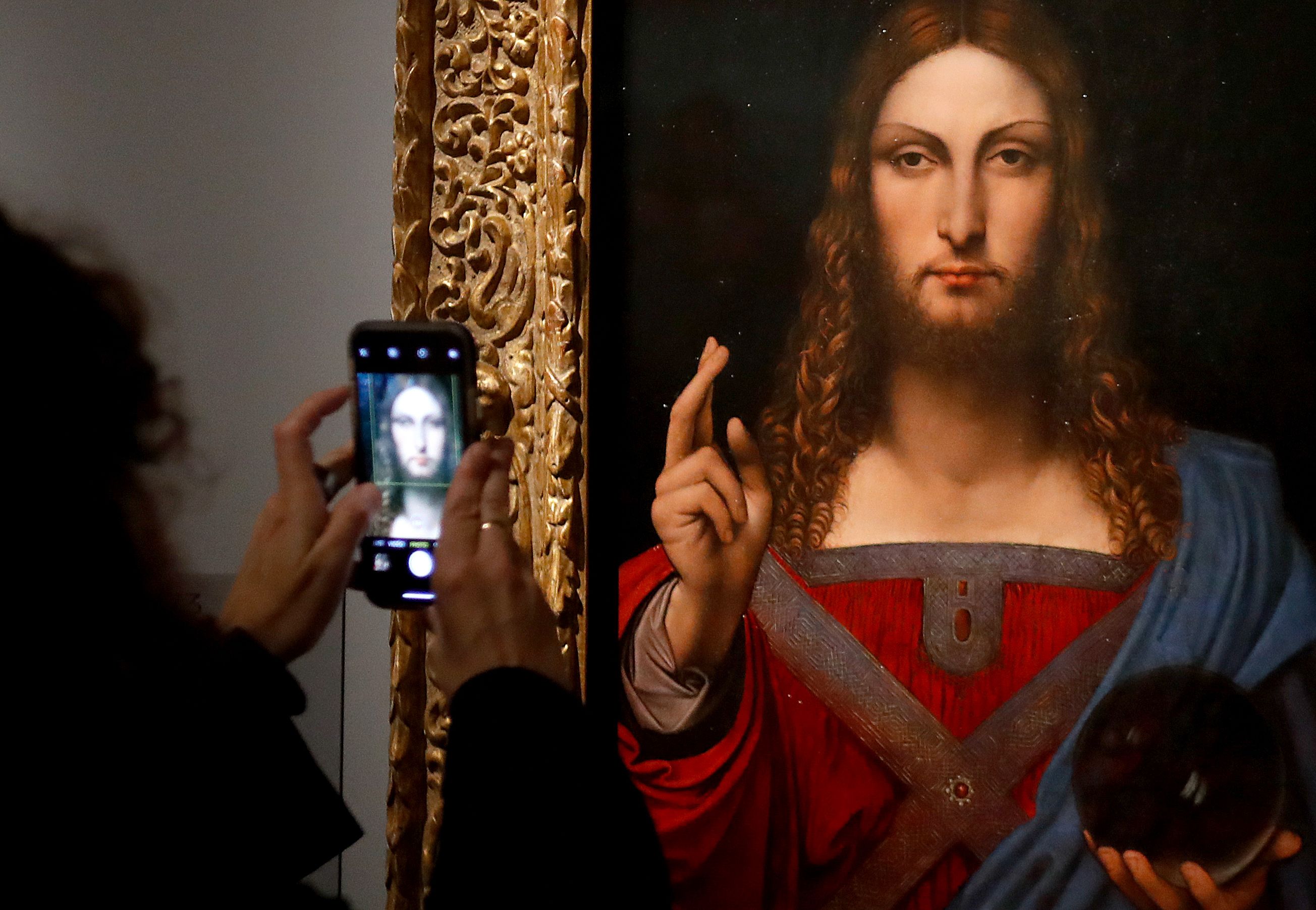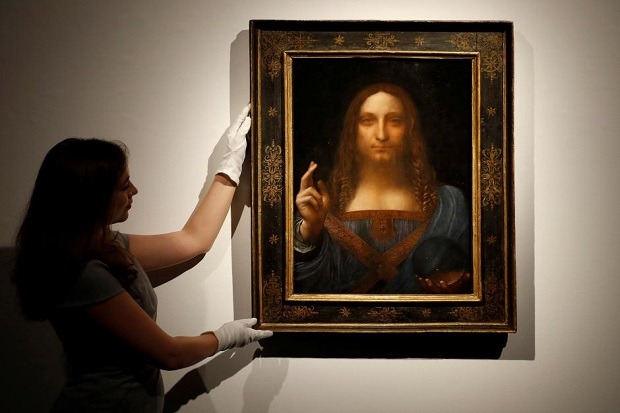Contents
In the world of art, few works command as much attention, intrigue, and controversy as Leonardo da Vinci’s “Salvator Mundi.” This masterpiece, depicting Christ as the Savior of the World, has captured the imagination of art lovers, scholars, and collectors for centuries. Let’s embark on a journey to unravel the mysteries surrounding this enigmatic painting and explore its significance in the realm of art history.

Salvator Mundi
1. The Master Behind the Brush:
“Salvator Mundi” is attributed to the Italian Renaissance polymath Leonardo da Vinci, renowned for his contributions to art, science, and engineering. Leonardo’s mastery of light, shadow, and anatomy imbues the painting with a sense of lifelike realism and spiritual depth, reflecting his profound understanding of the human form and psyche.
2. Rediscovery and Attribution:
For centuries, “Salvator Mundi” was lost to the annals of art history, its attribution and whereabouts shrouded in mystery. In 2005, the painting resurfaced at an auction in the United States, where it was initially sold as a work by a follower of Leonardo da Vinci. Subsequent research and restoration efforts led to its reattribution to Leonardo himself, sparking widespread fascination and debate among art historians.
3. Iconography and Symbolism:
“Salvator Mundi” portrays Christ as the Savior of the World, with his right hand raised in a gesture of blessing and his left hand holding a crystal orb representing the cosmos. The painting’s composition, with Christ depicted against a dark background and illuminated by soft light, evokes a sense of divine presence and transcendence.
4. Record-Breaking Sale:
In 2017, “Salvator Mundi” made headlines around the world when it sold at auction for a staggering $450 million, setting a new record for the most expensive artwork ever sold. The buyer, reportedly a Saudi Arabian prince, acquired the painting amid intense bidding and speculation, cementing its status as a coveted masterpiece of unparalleled value.
5. Conservation Controversy:
Despite its esteemed status, “Salvator Mundi” has been the subject of controversy and scrutiny regarding its condition and attribution. Some art experts have questioned the extent of Leonardo’s involvement in the painting, citing inconsistencies in style and execution. Additionally, concerns have been raised about the extent of restoration and alterations the painting has undergone over the years.

Salvator Mundi
6. Legacy and Influence:
Regardless of its disputed attribution and contentious history, “Salvator Mundi” continues to captivate audiences with its sublime beauty and spiritual resonance. Its significance extends beyond its monetary value, serving as a testament to Leonardo da Vinci’s enduring legacy and the enduring power of art to inspire, provoke, and transcend the boundaries of time and space.
“Salvator Mundi” stands as a testament to the timeless allure of Leonardo da Vinci’s genius and the enduring power of art to captivate the human imagination. Whether viewed as a masterpiece of divine inspiration or a product of artistic collaboration and conjecture, the painting continues to spark fascination and debate among scholars, collectors, and connoisseurs alike, ensuring its place in the annals of art history for generations to come.
Exploring the Merits and Drawbacks of Salvator Mundi: A Masterpiece under Scrutiny
The enigmatic painting “Salvator Mundi” by Leonardo da Vinci has garnered global attention for its profound beauty, historical significance, and astronomical wdbos price tag. However, like any revered artwork, “Salvator Mundi” is not without its merits and controversies. Let’s delve into the strengths and weaknesses of this iconic masterpiece.

Salvator Mundi
Advantages:
- Artistic Mastery: “Salvator Mundi” exemplifies Leonardo da Vinci’s unparalleled artistic skill and innovation. The painting showcases his mastery of technique, including meticulous attention to detail, subtle use of light and shadow, and exquisite rendering of form. Its portrayal of Christ as the Savior of the World resonates with profound spiritual and symbolic significance, captivating viewers with its transcendent beauty.
- Historical Significance: As one of fewer than 20 known paintings attributed to Leonardo da Vinci, “Salvator Mundi” holds immense historical and cultural significance. Its attribution to one of the greatest artists of the Renaissance period elevates its status as a rare and precious artifact of art history, offering insights into Leonardo’s artistic vision and legacy.
- Iconic Representation: The image of Christ as the Salvator Mundi, or Savior of the World, has been a recurring motif in Christian art for centuries. “Salvator Mundi” presents a timeless and universal depiction of Christ’s divine authority and compassion, resonating with believers and art enthusiasts alike across cultures and generations.
- Market Value: The sale of “Salvator Mundi” in 2017 for a record-breaking $450 million catapulted it into the realm of the most expensive artworks ever sold. While its astronomical price tag reflects the painting’s rarity, provenance, and historical significance, it also underscores its enduring appeal and investment value in the art market.
Disadvantages:
- Attribution Debate: Despite its attribution to Leonardo da Vinci, “Salvator Mundi” has been the subject of ongoing debate and skepticism among art historians and experts. Some scholars question the extent of Leonardo’s involvement in the painting, citing inconsistencies in style, execution, and provenance. The lack of consensus regarding its authorship casts doubt on its authenticity and historical provenance.
- Restoration Controversy: “Salvator Mundi” has undergone extensive restoration and conservation efforts over the years, leading to concerns about alterations to its original appearance and integrity. Critics argue that overzealous restoration may have obscured or modified Leonardo’s original brushwork, diminishing the painting’s authenticity and historical value.
- Ownership Disputes: The ownership of “Salvator Mundi” has been the subject of legal disputes and controversies, further complicating its provenance and authenticity. Questions surrounding the painting’s ownership history, including its acquisition, sale, and transfer of ownership, have raised doubts about its legitimacy and marketability.
- Divisive Reception: “Salvator Mundi” has elicited mixed reactions from art critics, scholars, and the public, reflecting the divisive nature of its attribution and significance. While some view it as a sublime masterpiece worthy of reverence and admiration, others remain skeptical of its authenticity and question its merits as a work of Leonardo da Vinci.
Conclusion:
“Salvator Mundi” stands as a complex and multifaceted artwork, celebrated for its artistic brilliance yet shrouded in controversy and uncertainty. While its historical significance and aesthetic appeal are undeniable, questions surrounding its attribution, restoration, and ownership continue to fuel debate and intrigue within the art world. Ultimately, the enduring allure of “Salvator Mundi” lies not only in its beauty but also in the enigmatic mysteries that surround it, ensuring its place as a masterpiece of enduring fascination for generations to come.
Read More Article About “Bakpau: Sentuhan Kreatif di Dapur, Kisah Siucces di Pasar“



